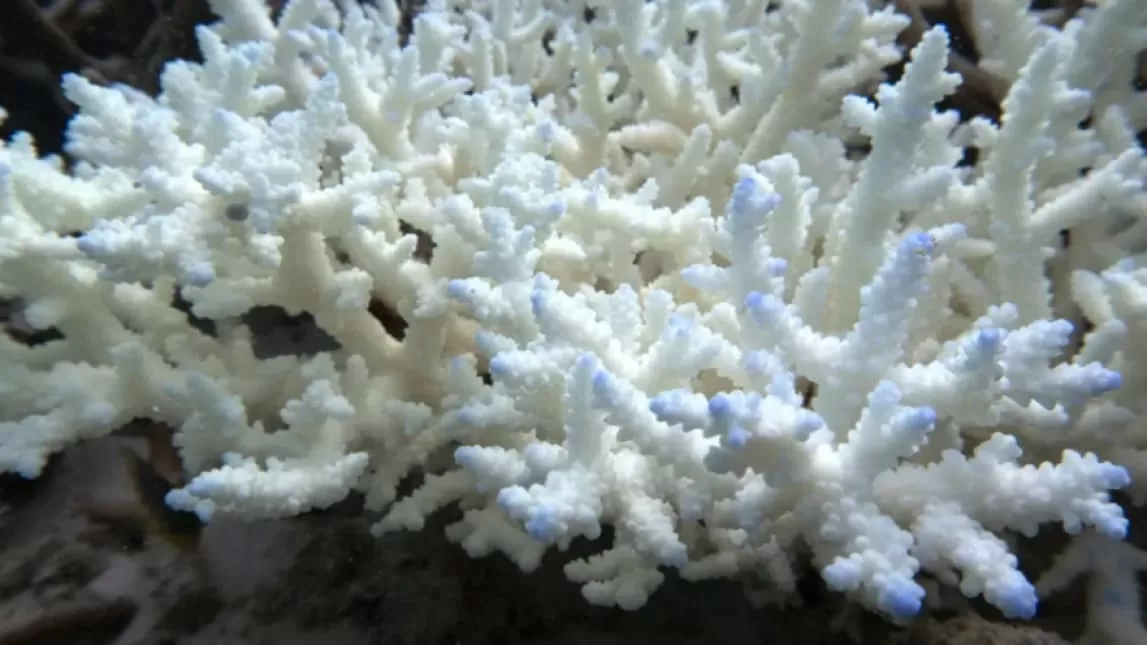The Great Barrier Reef, located off the coast of Australia, is undoubtedly one of the most breathtaking natural wonders on our planet. This spectacular coral ecosystem is home to thousands of species of marine life and is considered to be one of Earth’s most significant treasures. However, recent studies have revealed that this magnificent reef is facing a grave threat due to rising sea surface temperatures.
According to a study published in the scientific journal Nature, the first quarter of 2024 has recorded a temperature rise of 0.19°C above the previous peak. This increase in temperature is the highest recorded in the past four centuries, highlighting the severity of the situation at hand. This unprecedented warming is directly linked to the extensive coral bleaching that has been occurring on the reef, causing significant damage to its delicate ecosystem.
The Great Barrier Reef, spanning over 348,000 square kilometers, is considered to be one of the world’s most complex and diverse ecosystems. It is home to over 1,500 species of fish, 600 types of corals, and thousands of other plant and animal species. Besides being a vital habitat for marine life, the reef also serves as a significant tourist attraction, generating billions of dollars for the Australian economy each year. However, with the current state of the reef, all of this is at risk.
Coral bleaching occurs when ocean temperatures rise, causing the coral to expel the algae that give it its vibrant colors. This leads to the coral turning white, a sign of extreme stress, and if not recovered, it can eventually lead to their death. The recent study has shown that the Great Barrier Reef is experiencing widespread coral bleaching due to the rising sea surface temperatures. This is not the first time the reef has faced such a threat, with severe bleaching events occurring in 2016 and 2017 as well. However, the current situation is more severe and widespread, putting the future of the reef at risk.
The main culprit behind this extreme warming is none other than human-induced climate change. The burning of fossil fuels and the release of greenhouse gases have caused the Earth’s temperature to rise, resulting in warmer ocean waters. This, coupled with the El Niño weather pattern, has caused the sea surface temperatures to reach unprecedented levels. The effects of climate change are not something that can be ignored, and the Great Barrier Reef is paying the price.
The impacts of this extreme bleaching event on the Great Barrier Reef are far-reaching, with some scientists warning that it may cause irreversible damage to the ecosystem. The coral reefs are not only home to marine life but also provide shelter and food for thousands of species. If the bleaching continues, it will not only affect the coral but also have a ripple effect on the entire ecosystem, leading to a loss of biodiversity and potential extinction of various species.
Recognizing the severity of the situation, the Australian government has taken steps to minimize the damage and safeguard the future of the Great Barrier Reef. Strict measures have been put in place to reduce carbon emissions and promote renewable energy sources. The government has also increased its efforts to monitor and manage the coral bleaching, with a focus on restoring damaged coral reefs. It is a step in the right direction, but more needs to be done globally to mitigate the effects of climate change.
The Great Barrier Reef is a symbol of the beauty and intricacy of our natural world. It is our responsibility to protect and preserve this precious treasure for future generations. Every individual can contribute towards this cause by making small changes in their daily lives, such as reducing carbon footprint and advocating for sustainable practices. Governments and businesses must also take immediate action to combat climate change and reduce their impact on the environment.
Despite the challenges and setbacks, there is still hope for the Great Barrier Reef. Scientists are working tirelessly to find ways to restore the damaged coral reefs and make them more resilient to rising sea temperatures. With ongoing efforts and collective action, we can ensure that this natural wonder remains a thriving ecosystem for many years to come.
In conclusion, the current situation of the Great Barrier Reef is a wake-up call for all of us to take action against climate change. The extreme warmth of the sea surface temperatures is a direct result of human activities, and it is our responsibility to make a positive impact on the environment. Let us work together to protect the Great Barrier Reef and send a message of hope to the world, inspiring positive change for our planet’s future.

